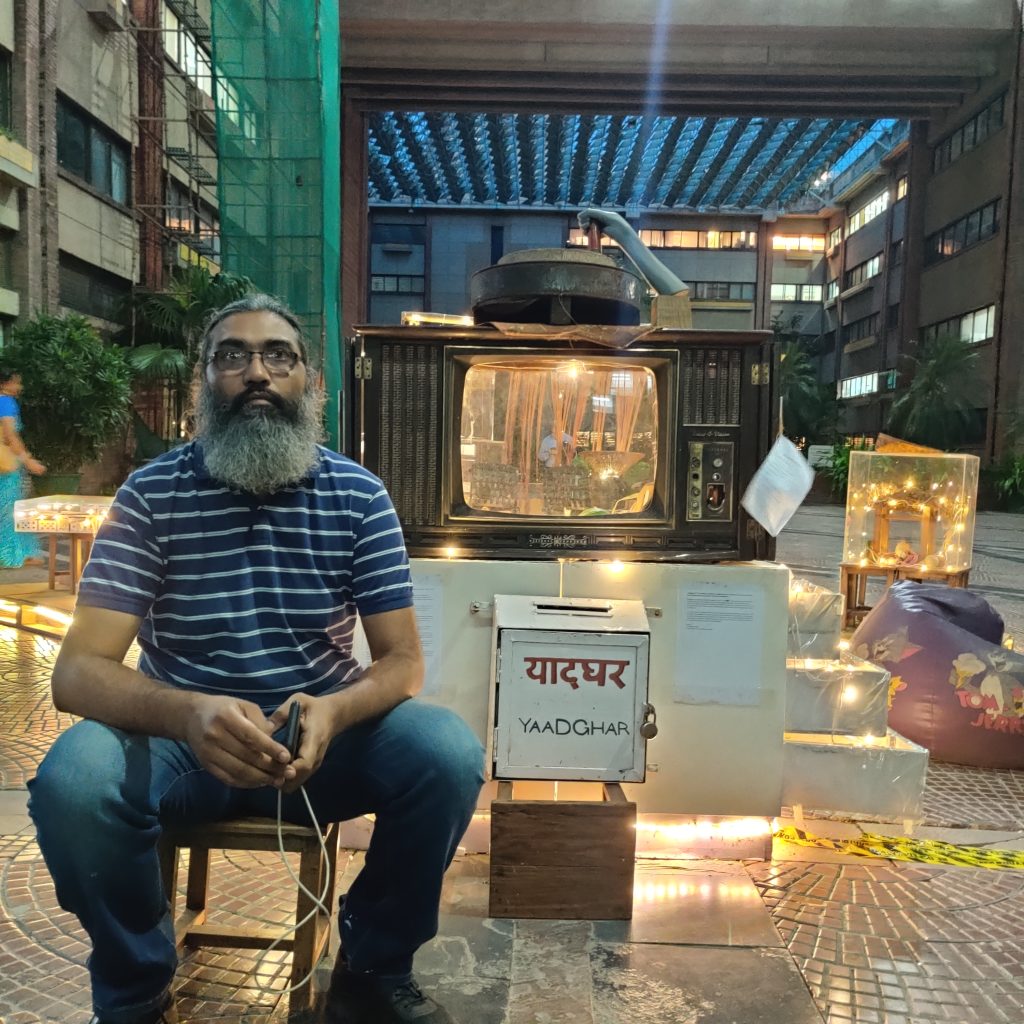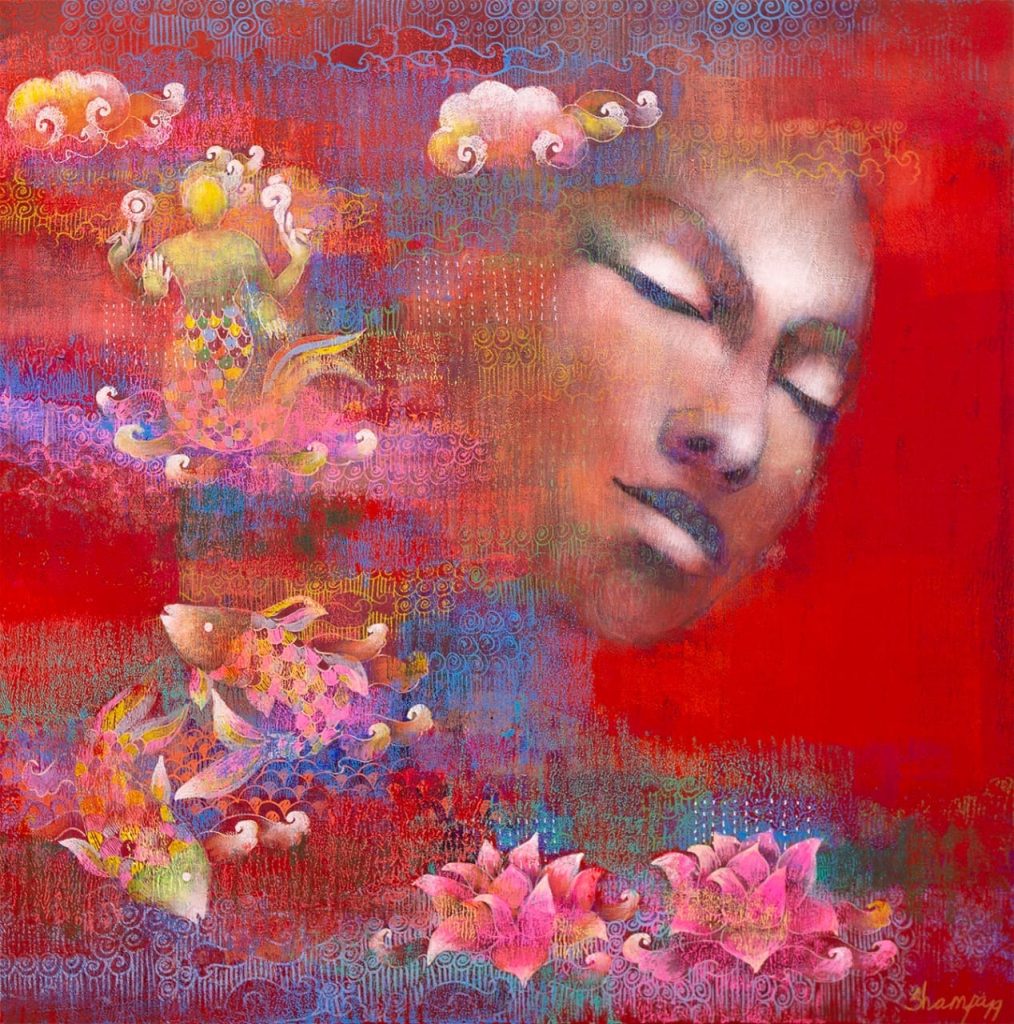We often ignore and neglect the cerebral connection with the objects that we’ve used in past years of our lives or still using. The objects we encounter have the power to bring our memories to life and spark a new realm in our minds. They hold the key to our intellectual belonging and contribute to our happiness. Objects take on significance when we assess their worth, not solely in terms of finances, but in the way they hold sentimental value for us. Holding on to a particular object mentally could prove to be an asset for memory that triggers at any point in our lives. Seeing objects not as lifeless entities, but as tools that nourish our lives with memories at every stage, is crucial in understanding their significance. Objects hold dimensions and capture our day-to-day interests, as they contribute to our connection with them, which eventually grows and fades away with time. However, they come back in the form of certain memories that prove useful for mental pleasure. Objects hold emotional aspects; they might be responsible for re-creating the feelings and experiences that happened a long time ago. The act of collecting objects presents captivating narratives that effortlessly captivate our minds, resurfacing in countless ways to enrich our perspective on life. An exhibition called “Yaadghar” by Akkshat Sinha at India Habitat Centre offers different types of objects, set up uniquely, that offer a chance to viewers to collect their own dissolved memories that lie way back in their heads. The way in which a house is recreated, using objects as furniture, not only represents a physical dwelling but also metaphorically symbolizes the intricate workings of the human brain. The exhibition allows you to get lost in the memories that were present at one time. Memories, whether positive or negative, shape our identity and allow us to reflect on who we truly are. They serve as a powerful tool to assess our personal growth and true essence, inspiring us to approach them with creativity and affection.
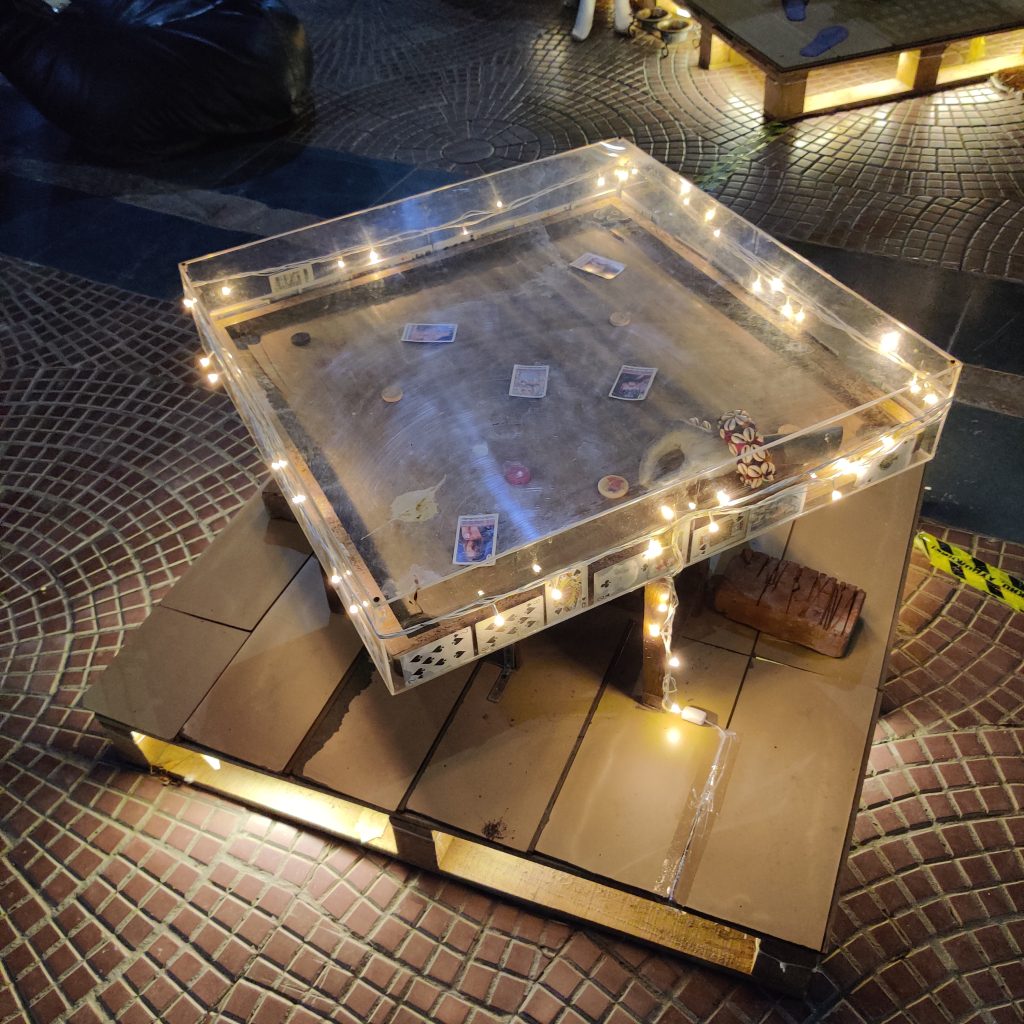
Courtesy: Abhishek Dixit.
Akkshat explains his process, “So the point is I am a very nostalgic kind of a person by nature. I always liked to write, and I’ve always found words the best way to find a connection with the objects and that’s what this exhibition is about. Every object has the power to evoke memories. Here, you will find not only items that surpass my own lifetime, but also relics from my ancestral homes. Moreover, an extensive collection of artifacts I’ve gathered over the past 50 years awaits you. Even I picked up stuff from my other family members as well, parents or ancestors from the village. I’ve collected and held onto these things, despite the limited space and the skepticism and ridicule from others. I believe that the true power of an object lies in its ability to transport me from my current location to an imaginary world, where I can vividly recollect meaningful moments, such as a memorable evening with my grandfather or a serendipitous encounter with someone special. I think those are the moments I would die for.
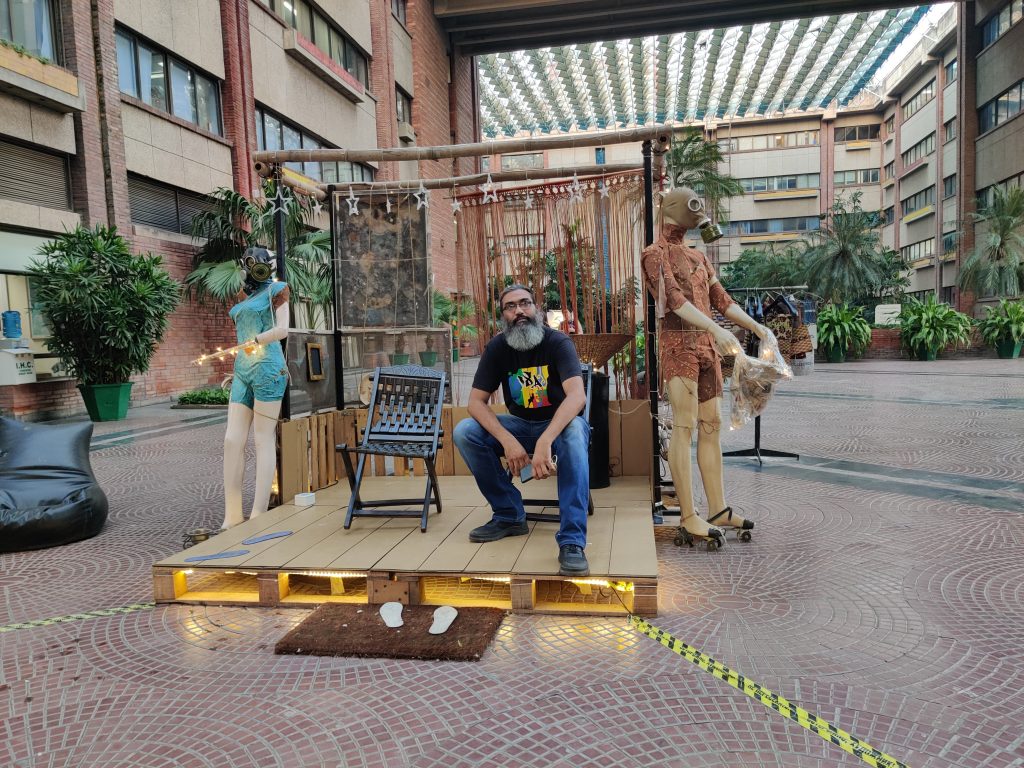
Courtesy: Abhishek Dixit.
When I look at my art career, which is about 14–15 years after my engineering, I’ve been in the creative and art field for the last decade and a half. I noticed that in my very first solo exhibition, there was a special corner dedicated to showcasing my unique bamboo installation and the paintings that I have passionately created. So there was a corner that had all my memorabilia from my graduation days. I had my student I card, I had my books, I was in Moscow for about 10 years, so I kept bus passes for all the months so each month we used to have new ones and I almost had 100 bus passes. I believe in cherishing objects that hold a special meaning to me. This belief inspired me to propose an installation to Habitat, in which I could create art that not only triggers my own nostalgia but also evokes emotions in others through their own personal objects. So even putting it up here in the public space is a good choice for this. Because I see random people interacting with the works finding whatever interests them or whatever they relate with. Many individuals are often reminded of the objects that evoke their life, past, and cherished memories. I believe this is the core concept driving this idea. My main goal was to transform my memory holders into gateways for others, granting them the chance to embark on their very own investigative journeys. Amidst the hustle and bustle, in a world where everything is in constant motion, Habitat stands out as a haven of welcome, drawing people for countless reasons. Whether it’s a momentary escape for a delightful cup of coffee or a vital gathering for a significant meeting, this space never fails to enthrall. Each person arrives with a purpose, rushing towards something they need. And it is here that I have created something meaningful. As they pause for a moment in this place, their eyes wander and take in their surroundings. Perhaps, at that moment of stillness, the objects around them stir up memories of their past. And for me, that is a truly satisfying outcome.”
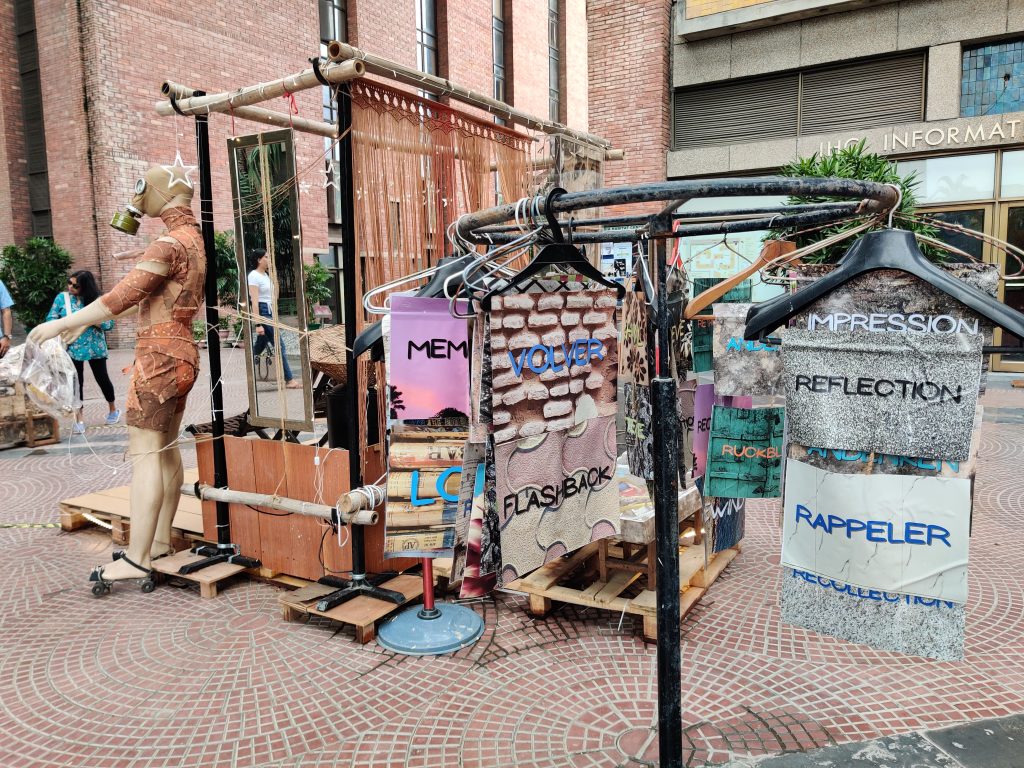
Courtesy: Abhishek Dixit.
When asked about the symbolism in his work, he responds, “There is symbolism obviously, but I’ve tried to keep it as an undercurrent. When I was creating this thing I mean it was called “Yaadghar” which means house of memory. What I’ve done is, I am trying to recreate a house without walls. So, the walls are no longer there, but what does a household within itself apart from the objects it holds humans? So humans are there either in spirit or in person themselves. So I thought if I put a mannequin as a presentation of humans, they’re wearing gas masks, so it’s also a statement on the current situation of air that we have in Delhi and if we continue in the same form if we will be probably wearing gas masks everywhere. So, I feel that these are two supposed humans whose Yaadghar it is that we are gaining access to. If they are of future then anything of their past will be either our present, our future, or our past as well. So it will cover all these zones for us. Also, if you see these mannequins have been nude as they don’t come with any clothes, they have been covered with the upholstery that was there of my own of our past sofas, chairs, and all. This statement suggests that humans are slowly transforming into mere objects within their own homes, standing apart and preoccupied with their individual belongings. So we inhabit the same house even the same room, but we’re not connected. We probably just message each other. So there are a lot of contexts and undercurrents that I am trying to build into it. Not everybody needs to understand that and it’s fine.”
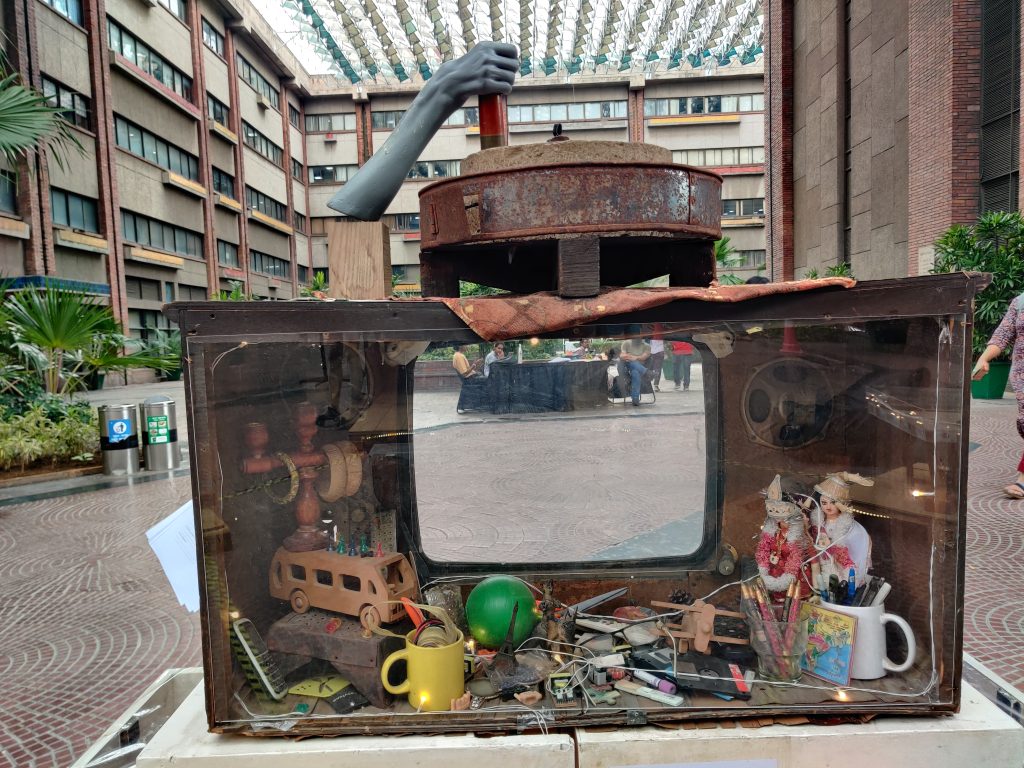
Courtesy: Abhishek Dixit.
Akkshat reflects on how should one see his work, “The connection should come naturally. As an artist and as a person who has created this installation, I’ve already in my mind worked out how people will approach this. As a curator, I not only create these works but also prioritize exhibition design. It is crucial for me to envision how visitors will experience the exhibition – what they will see first and how their gaze will travel. While I intentionally incorporate certain elements, it is impossible to predict with absolute certainty how people will interact with the exhibition. I’ve included my own elements to help others visualize it, but I’m pleasantly surprised to see that people are actually watching it in different ways and using their own terms. Start seeing the same objects but in a new light; there’s no specific way for the people to interact. It’s in the public space specifically for that purpose; there are no norms there are no rules. You come interact, you can sit on chairs or the bean bag or if you just wanna look at anything, I am fine with everything. I think the fact that they’ve interacted with it, it’s good for me.”
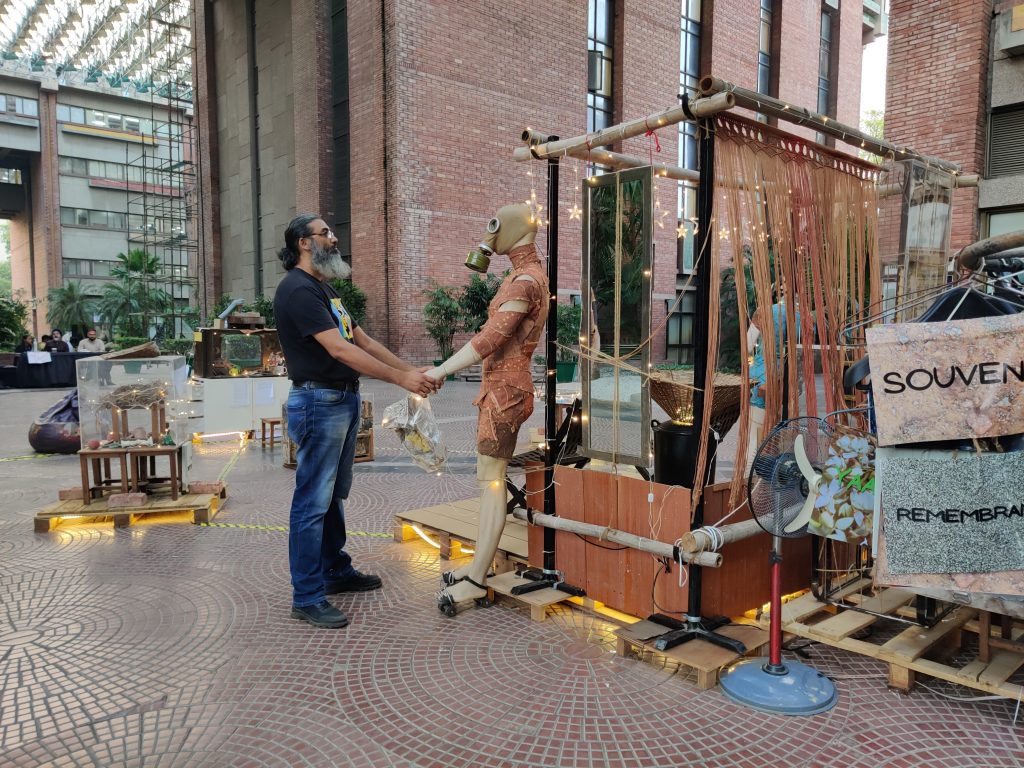
Courtesy: Abhishek Dixit.
When asked about his vision for the installation, Akkshat explained that he had to carefully visualize everything in his studio before bringing it to this space. However, upon arriving, he quickly realized that the space was much larger than anticipated and offered a variety of different angles to view the artwork. This required him to adapt and make changes accordingly. This experience taught him a valuable lesson as an artist, as he began to see his own work through the eyes of a viewer. Lately, he has been spending time observing his artwork at various times of the day, which has allowed for a truly fascinating discovery. The atmosphere of the installation undergoes a remarkable transformation when illuminated in the evening, accompanied by the melodic sounds of chirping birds. Sitting in a chair, he takes the time to reflect and envision his artwork in his mind, eager to explore its appearance from different perspectives. Nonetheless, the true essence of his artistry is truly revealed when he receives feedback from individuals, as it is frequently accompanied by profound and perceptive interpretations. He shared an inspiring example of a young boy, just seven years of age, who visited the installation multiple times. This child, with his fresh and innocent eyes, was able to uncover profound meanings within the artwork.
Read Also:
Geometric Explanation of Truth Within: “Of Thoughts and Memories” by Sanjay Bhattacharyya

Contributor


